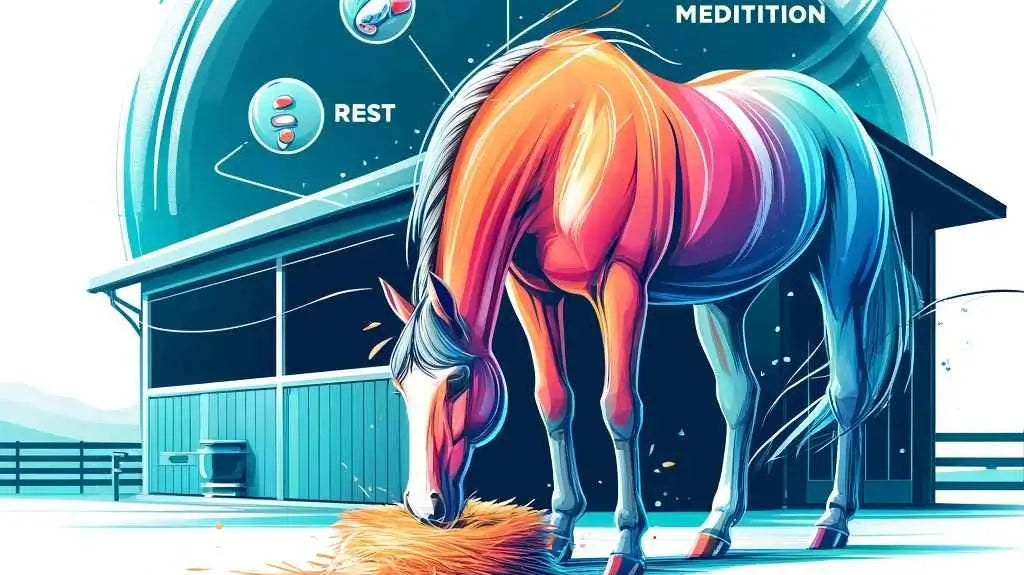What did horses evolve from?
Introduction
We know that horses are very old. Ancient horse fossils date back about 50 million years, and the earliest known ancestor of the modern horse was an animal called Hyracotherium. Over time, Hyracotherium evolved into different species, including Eohippus and Mesohippus. Horses have always been a part of human history and culture. They were first domesticated around 5500 BC in what is now Kazakhstan; ancient Egyptians worshipped horses and even mummified them after they died; today there are estimated to be more than 60 million horses worldwide!
Ancient horse fossils date back about 50 million years.
Ancient horse fossils date back about 50 million years. The oldest known ancestor of the modern horse was Hyracotherium, which lived in Eurasia and North America during the Eocene epoch (about 56 to 34 million years ago). Hyracotherium was a small, dog-sized animal with four toes on each foot and hooves like those of today's deer.
The earliest known ancestor of the modern horse was an animal called Hyracotherium.
Hyracotherium is the earliest known ancestor of modern horses. It was a small, dog-sized animal that lived about 50 million years ago. This prehistoric mammal was an early member of the horse family and had many features similar to those seen in modern horses (including three toes).
Hyracotherium was first discovered by Richard Owen in 1841 when he found some fossils in France. He named these fossils Equus hydruntinus ("water horse") because they were thought to have been washed down from higher ground into a riverbed where they were preserved as fossils. The name Hyracotherium means "hyrax-like beast". The hyrax is another type of mammal related to elephants and manatees; it lives today only on islands off Africa's coast
Over time, Hyracotherium evolved into different species, including Eohippus and Mesohippus.
Over time, Hyracotherium evolved into different species, including Eohippus and Mesohippus. Eohippus was the first horse species and lived around 50 million years ago in North America. Mesohippus was the second horse species and lived around 40 million years ago in North America as well. Both of these animals were ancestors to modern horses that live today!
Horses have always been a part of human history and culture.
Horses have always been a part of human history and culture. They have been used in warfare, farming and transportation for thousands of years. Horses were domesticated thousands of years ago, meaning that humans have bred them over generations to be useful for various purposes.
Horses are also an important part of human culture; they appear in art and literature throughout history, often as symbols of power or strength (such as cavalry).
Horses were first domesticated around 5500 BC in what is now Kazakhstan.
Horses were first domesticated around 5500 BC in what is now Kazakhstan. The earliest evidence of horses being domesticated comes from this area, and it's thought that people there selectively bred wild horses for use as riding animals.
The horse was not domesticated from another species of horse; rather, it evolved from its own ancestors (the eohippus). The change that allowed for horses to be tamed was an increase in height and weight--they grew longer legs that made them faster runners, but also heavier bodies so they could carry people better than their smaller ancestors could do on their own two feet!
Horses were used for farming and transportation as well as warfare in ancient times.
Horses were used for farming and transportation as well as warfare in ancient times. The first evidence of horses being domesticated dates back to around 4,000 BC. This was when humans started breeding them for specific traits like strength and speed. These early domesticated animals were used for agriculture and transportation, but also for warring purposes when needed.
The use of horses changed over time depending on the area where they lived: some cultures used them solely for racing or hunting; others relied heavily on their strength during battle; while still others used both types of "horses" equally well!
Ancient Egyptians worshipped horses and even mummified them after they died.
The ancient Egyptians worshipped horses, and even mummified them after they died. The Egyptians believed that the horse was a link between humans and the gods. They believed that the horse could help them communicate with the gods.
There is evidence that horses were domesticated as far back as 5500 BC, but their ancestors go back much further in time
Horses were domesticated for over 5500 years ago, but their ancestors go back much further in time. Scientists believe horses evolved from small animals called "proto-horses," which were about the size of dogs and lived in North America. These proto-horses could run faster than any other animal on Earth at that time, so they were able to escape predators like saber-toothed cats and wolves by running away from them whenever they tried to attack them.
The first evidence of domestication comes from what is now Kazakhstan--a place where many ancient cultures lived together during this period of human history known as the Neolithic Era (which means "new stone age"). Here we see evidence of people using horses for farming and transportation as well as warfare in ancient times; this suggests that humans had figured out how useful these animals would be for helping them survive harsh winters without having enough food stored up for themselves or other members within their community
Conclusion
Horses have been a part of human history for thousands of years. They were first domesticated around 5500 BC in what is now Kazakhstan and have continued to be an important resource for people ever since. Horses were used for farming and transportation as well as warfare in ancient times, but they also served as companions who could understand their owners' feelings better than anyone else could because they had similar social structures themselves!




